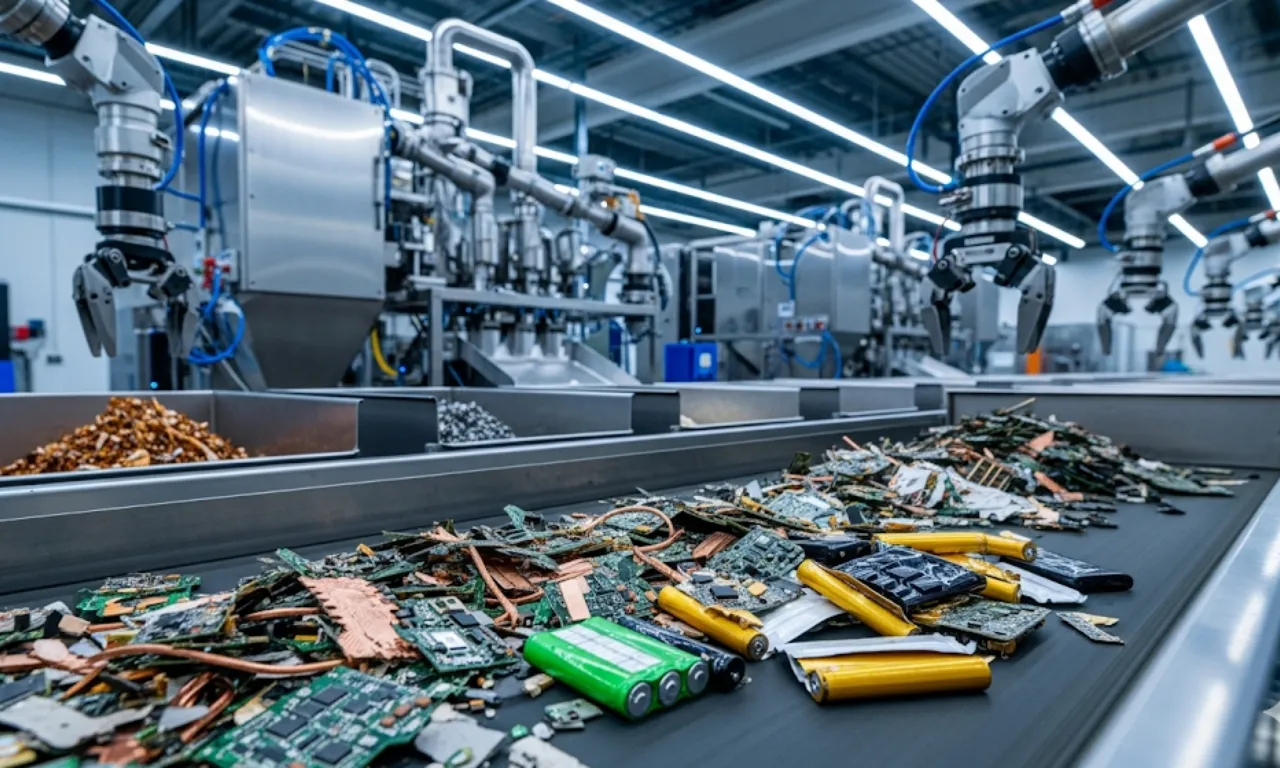- Government approves Rs. 1,500 Crore Incentive Scheme to boost critical mineral recycling.
- Scheme aims to build domestic capacity and supply chain resilience for critical minerals.
- Benefits include Capex and Opex subsidies for recyclers, with job creation and investment expected.
The Indian government has given a big boost to the recycling sector by approving a Rs. 1,500 Crore Incentive Scheme to promote Critical Mineral Recycling. This scheme is a very important part of the National Critical Mineral Mission (NCMM), which is designed to improve India’s capabilities and make sure there’s a stable supply chain for critical minerals. As part of the NCMM, which focuses on finding, auctioning, and operating mines, and getting foreign assets, this scheme helps with the immediate need for supply chain sustainability through recycling. The scheme is vital for making sure critical minerals flow steadily to Indian industries by using secondary sources.
Understanding the Rs. 1,500 Crore Critical Mineral Recycling Incentive Scheme
This new incentive scheme is a smart move to develop India’s ability to recycle and produce critical minerals from secondary sources. It plays a key role within the larger National Critical Mineral Mission (NCMM). While the NCMM works on long-term solutions like finding minerals and getting foreign assets, this scheme offers a short-term solution by focusing on recycling. It aims to help India become more independent in critical minerals, which are very important for many high-tech industries and defense uses.
Also Read – Goods and Services Tax (GST) Reform 2025-26
Scheme Duration and Applicable Feedstock
The Incentive Scheme to promote Critical Mineral Recycling will be active for six years, starting from the financial year 2025-26 and ending in FY 2030-31. This longer period allows for steady development and investment in the recycling sector. The scheme is designed to accept specific types of feedstock, making it clear what materials can be processed to get the incentives. Eligible feedstock includes:
- Electronic waste (e-waste)
- Lithium Ion Battery (LIB) scrap
- Other scrap materials, like catalytic converters found in old vehicles.
It’s important to know that the scheme specifically targets the recycling process that actually extracts critical minerals, not just the production of black mass.
Who Can Benefit from the Scheme?
This scheme is open to everyone, aiming to support many players in the recycling industry. Both established, large-scale recyclers and smaller, new recyclers, including startups, can benefit. A big part of the scheme’s money, specifically one-third, has been set aside for these smaller companies and startups, encouraging new businesses and new ideas in the sector. The incentives can be used for setting up new recycling units, or for expanding the capacity, updating, or diversifying existing recycling facilities.
Incentive Structure: Capex and Opex Subsidies Explained
The scheme offers two types of incentives to encourage investment in recycling infrastructure and operations. These incentives are divided into Capital Expenditure (Capex) and Operational Expenditure (Opex) subsidies:
- Capex Subsidy: This offers a 20% subsidy on the cost of plant and machinery, equipment, and related utilities. To get the full subsidy, production must start within a set time. If production is late, a smaller subsidy rate will apply.
- Opex Subsidy: This incentive is linked to the extra sales achieved compared to a base year (FY 2025-26). Beneficiaries will get 40% of the eligible Opex subsidy in the second year of operation and the remaining 60% in the fifth year, from FY 2026-27 to FY 2030-31. This depends on meeting specific targets for extra sales.
Subsidy Ceilings for Different Entity Sizes
To make sure benefits are spread widely and to support companies of different sizes, the scheme has specific subsidy limits:
- Large Entities: The total incentive (combining Capex and Opex subsidies) for large companies is capped at Rs. 50 crore. Within this, the Opex subsidy alone is limited to Rs. 10 crore.
- Small Entities (including Startups): For small companies and startups, the total incentive is capped at Rs. 25 crore. The Opex subsidy for this group is limited to Rs. 5 crore.
These limits are designed to encourage everyone to participate while managing the scheme’s overall costs.
Expected Outcomes and Job Creation
This Rs. 1,500 Crore Incentive Scheme is expected to have a big effect on India’s critical mineral recycling scene. Key expected results include:
- Development of at least 270 kilo tons of annual recycling capacity.
- Production of about 40 kilo tons of critical minerals every year.
- Attracting around Rs. 8,000 crore in new investments.
- Creation of nearly 70,000 direct and indirect jobs, which will boost employment.
These results show how the scheme can greatly improve India’s independence and economic growth in the critical minerals sector.
Stakeholder Consultation Process
Creating this complete scheme involved a lot of discussion with industry players and other important people. Several rounds of talks were held through special meetings, seminars, and other interactive sessions. This cooperative method made sure that the scheme’s design is practical, meets industry needs, and matches national goals for critical mineral security and recycling.
| Aspect | Details |
|---|---|
| Total Outlay | Rs. 1,500 Crore |
| Scheme Name | Incentive Scheme to promote Critical Mineral Recycling |
| Scheme Duration | FY 2025-26 to FY 2030-31 (6 years) |
| Eligible Feedstock | E-waste, Lithium Ion Battery (LIB) scrap, Catalytic converters, etc. |
| Incentives | 20% Capex Subsidy, Opex Subsidy on extra sales |
| Subsidy Ceilings (Total) | Rs. 50 Crore (Large Entities), Rs. 25 Crore (Small Entities) |
| Expected Investment | Approx. Rs. 8,000 Crore |
| Expected Jobs | Approx. 70,000 direct & indirect |
This scheme is a forward-thinking plan that promises to strengthen India’s position in the global critical minerals market by encouraging a strong domestic recycling system.

